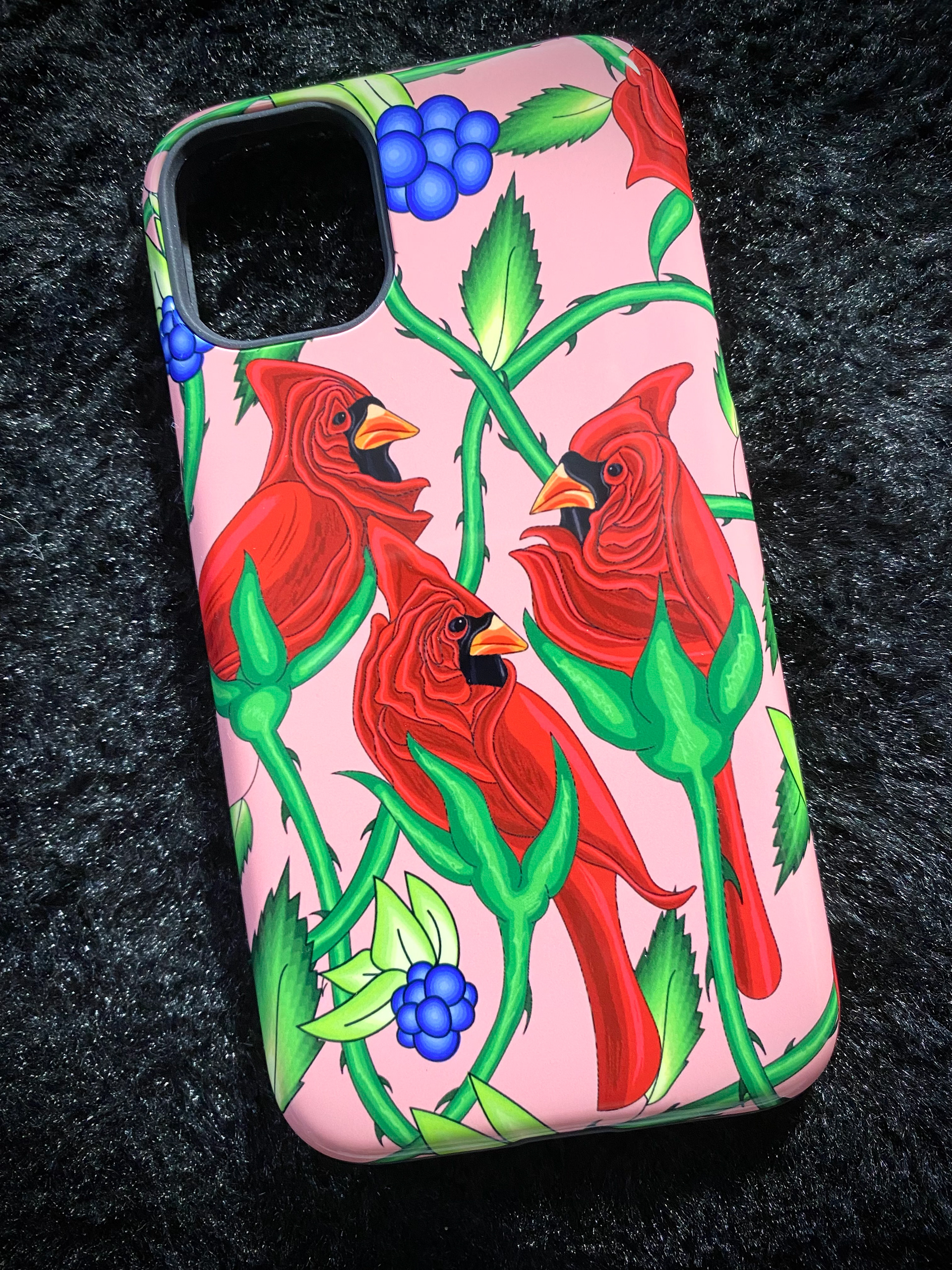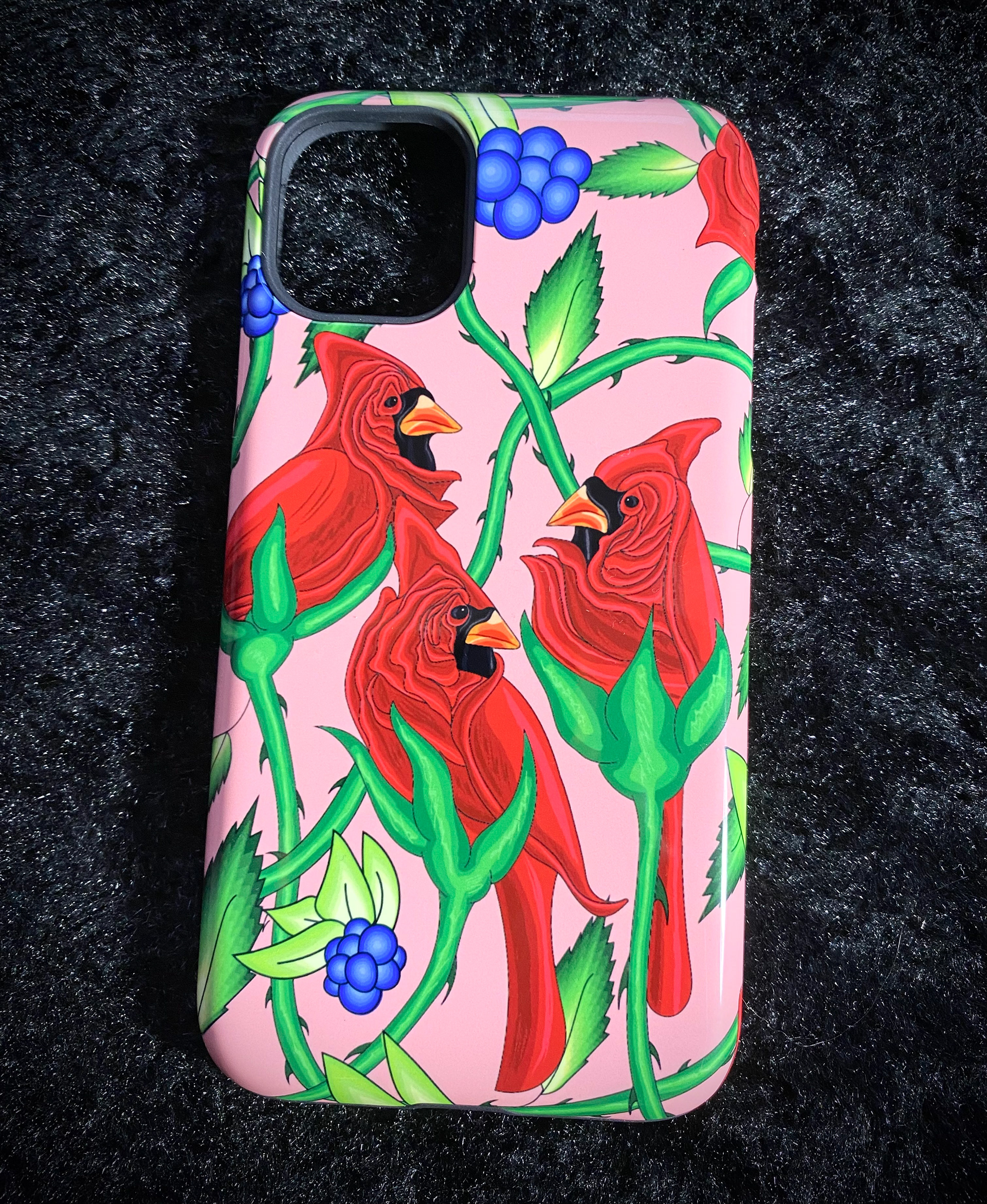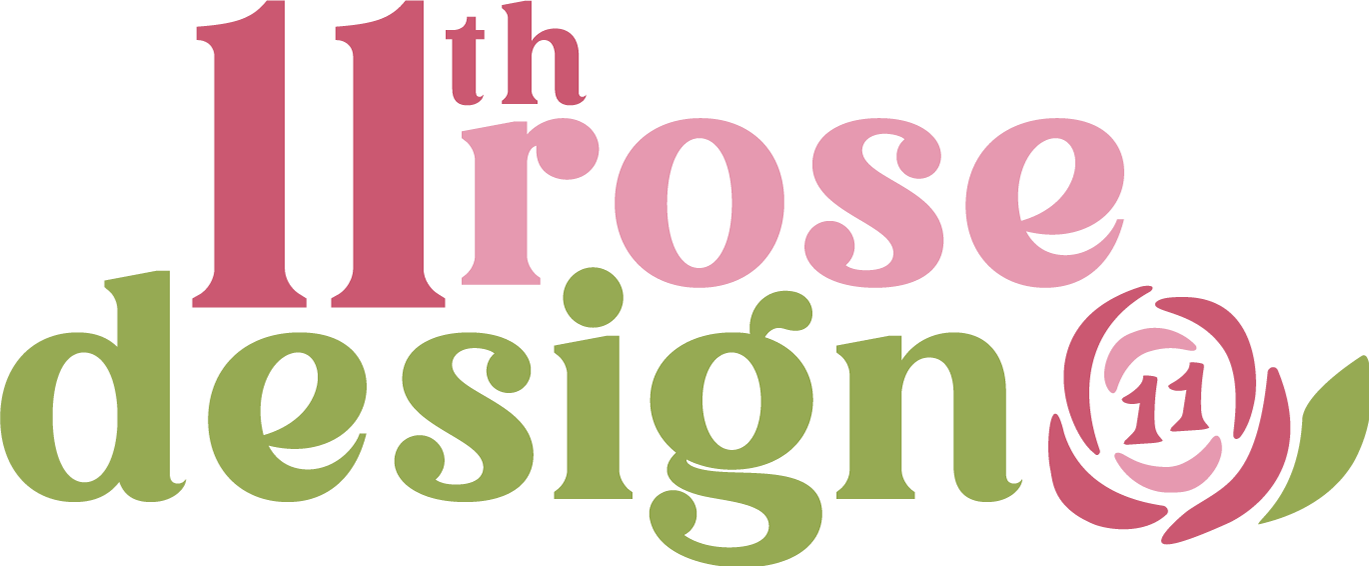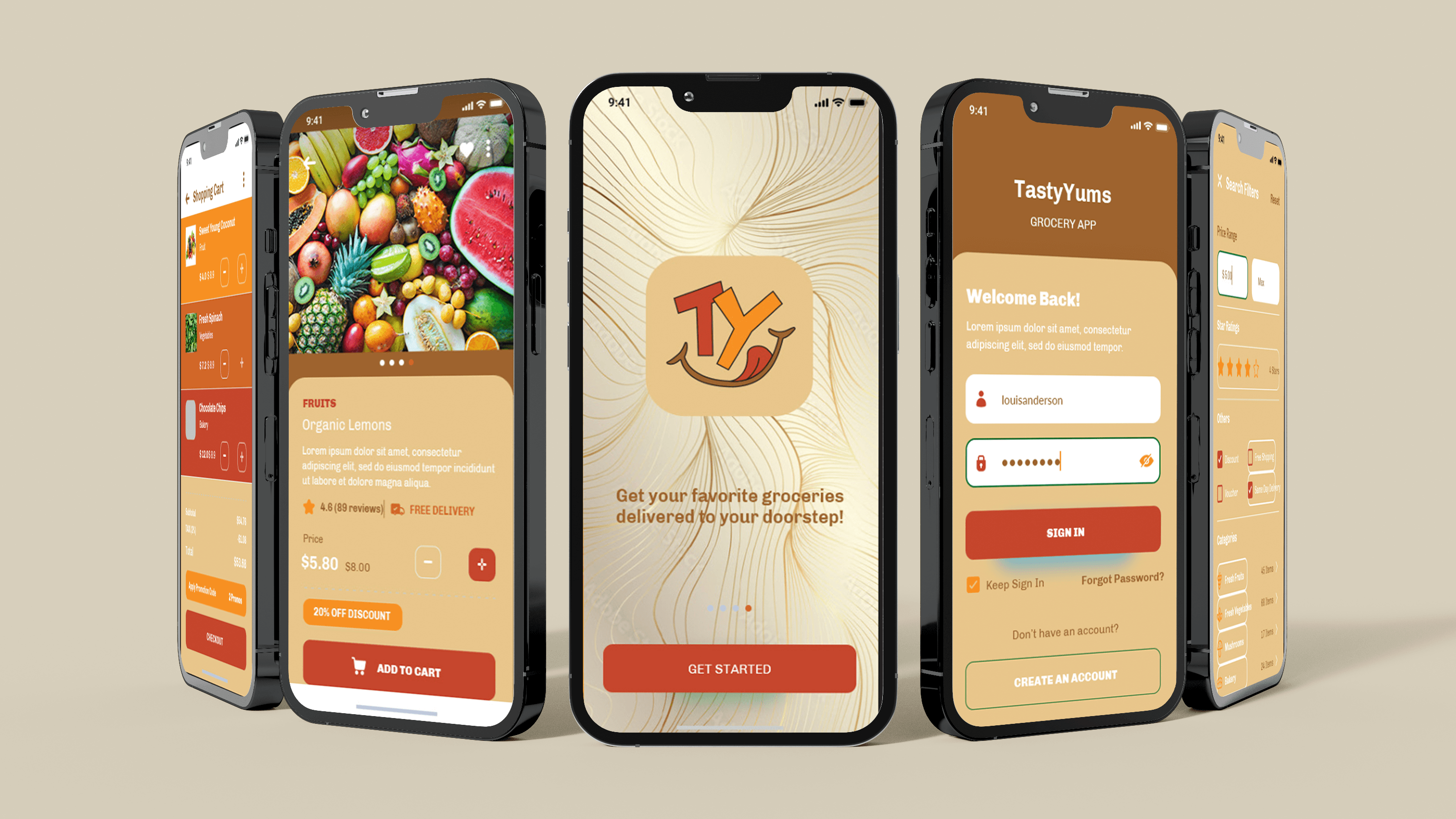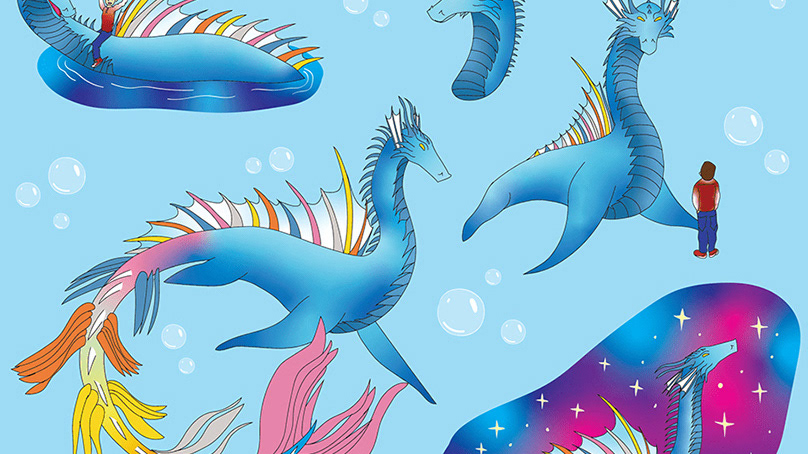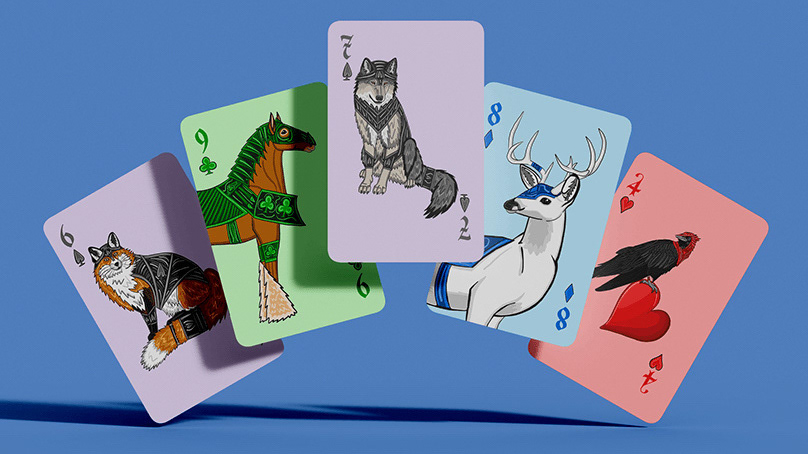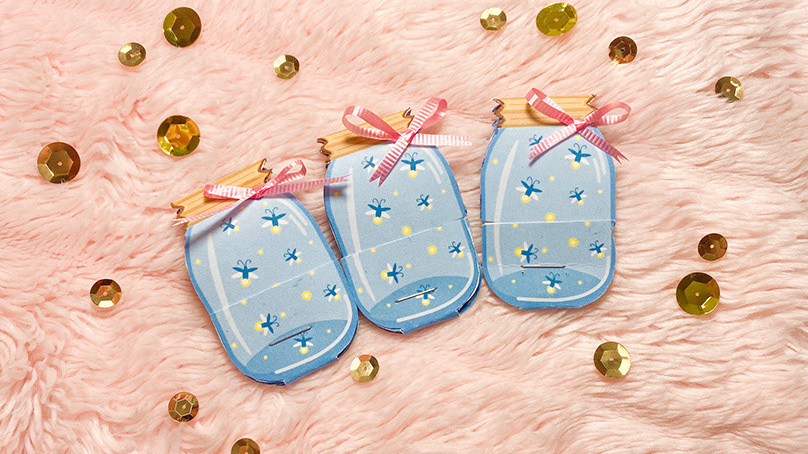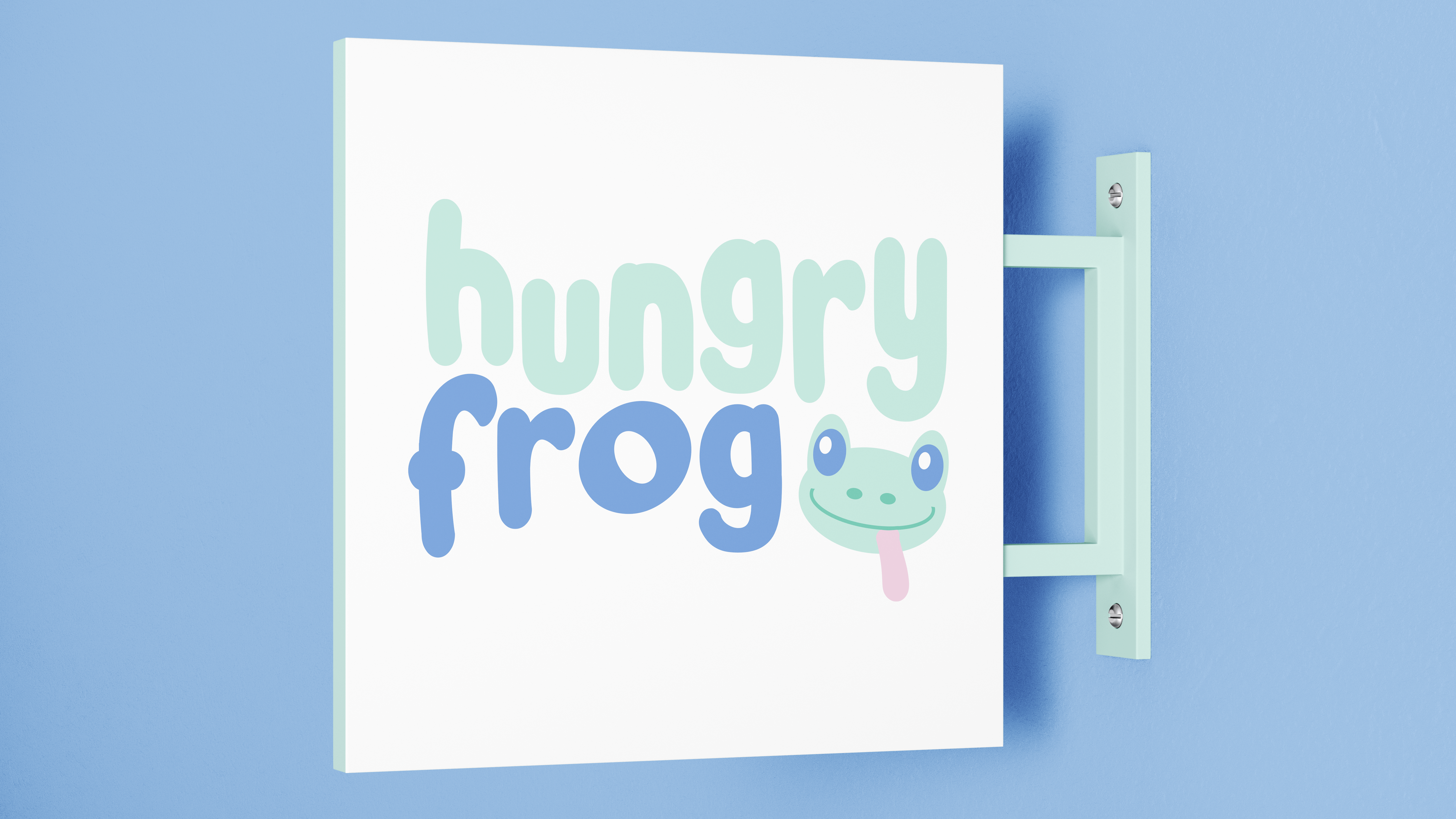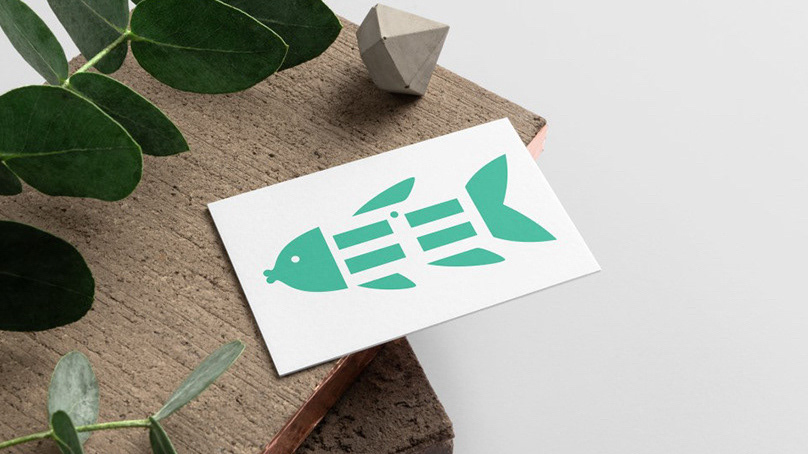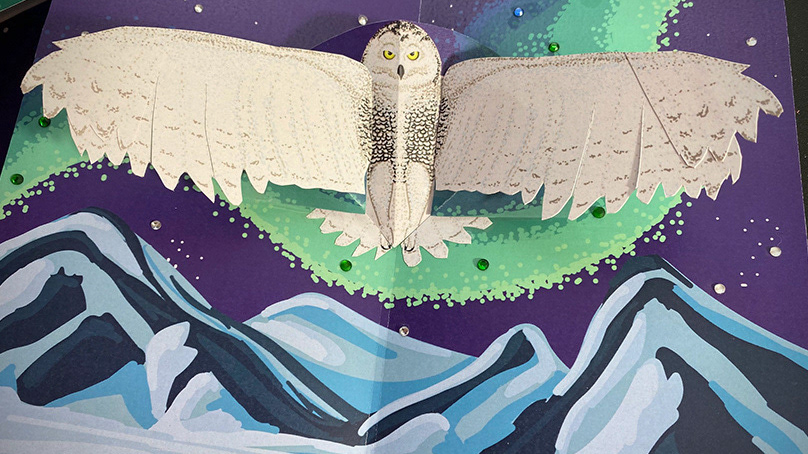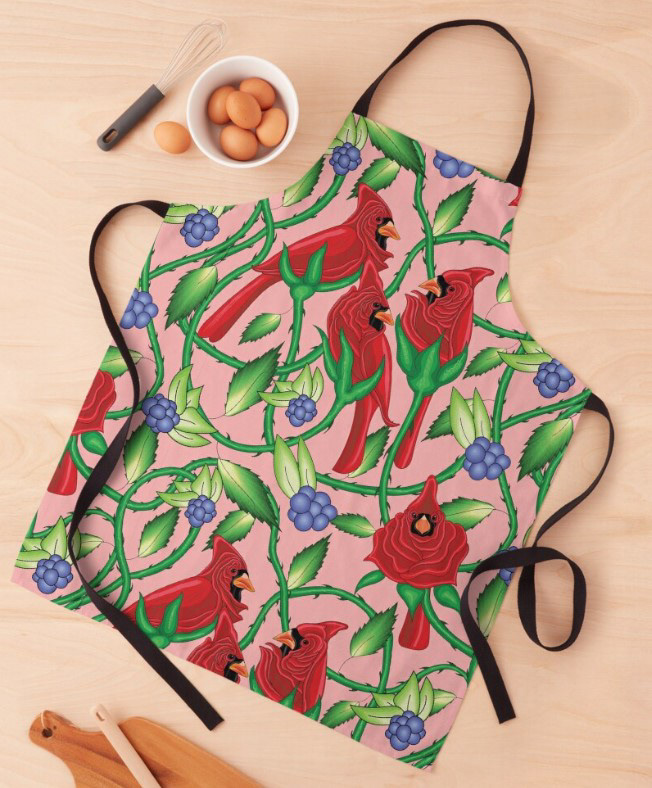
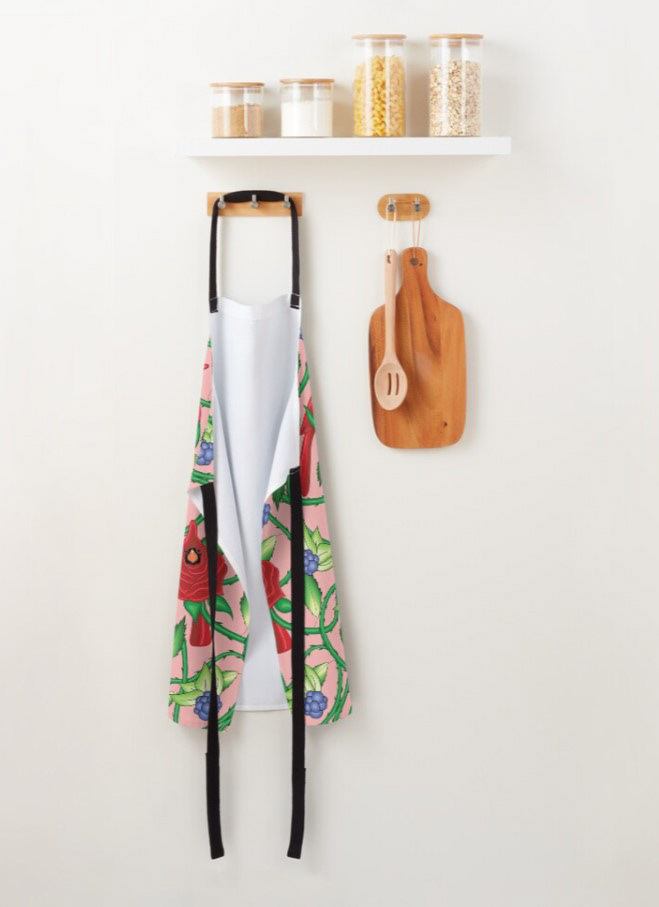
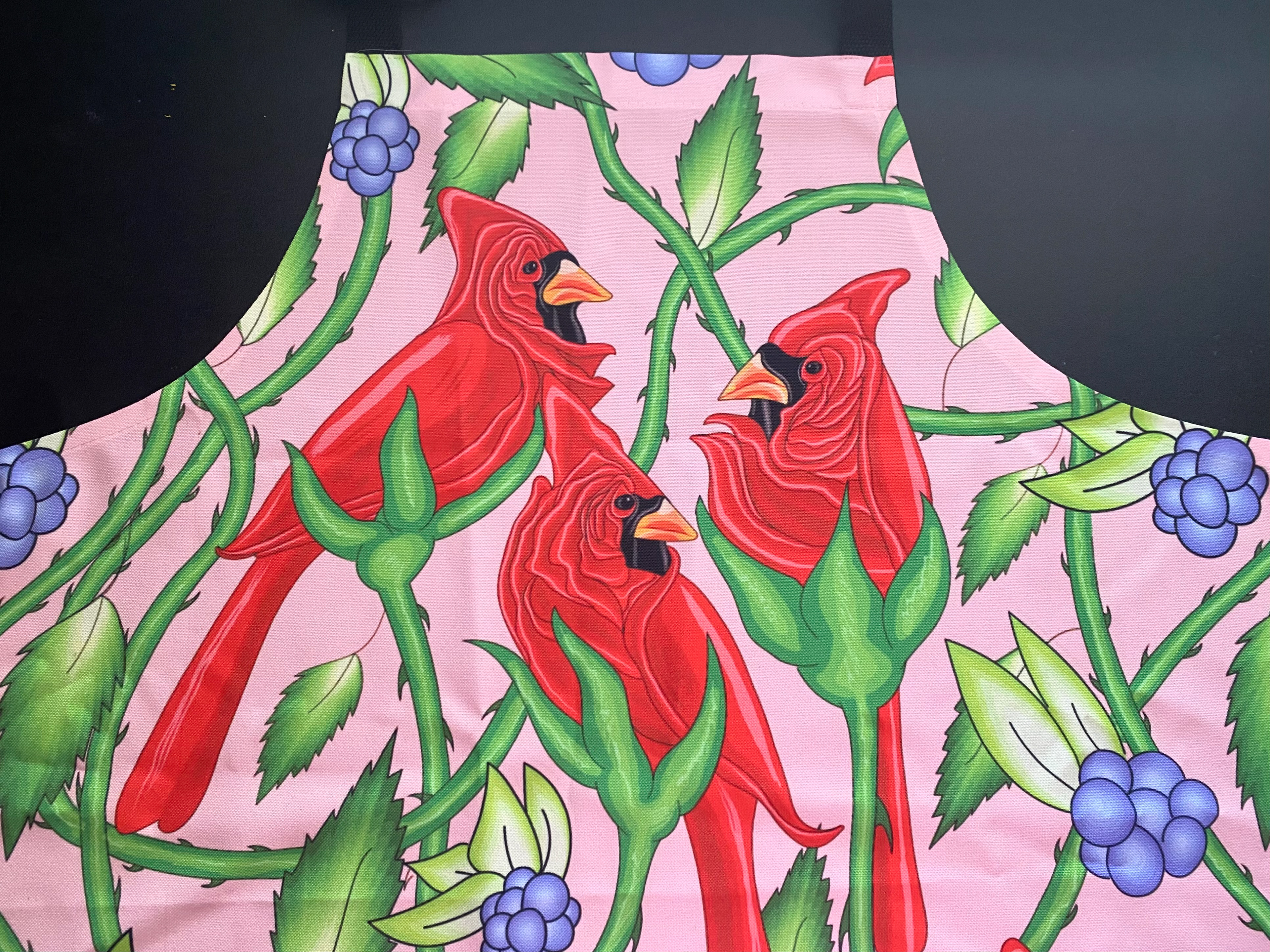
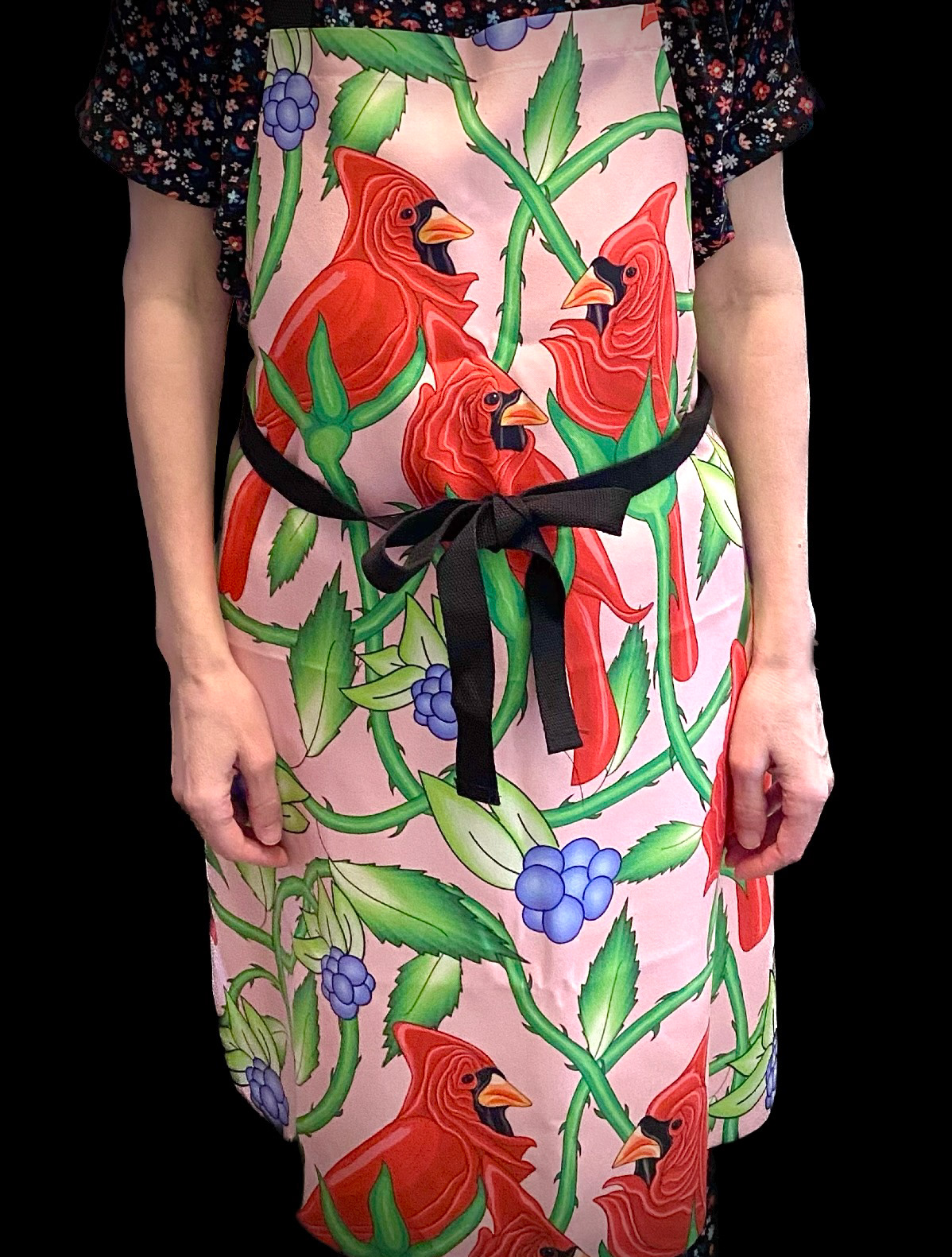
Project Brief
This project's goal was to create a seamless pattern. A seamless pattern is one that can be tiled or repeated indefinitely without a noticeable edge. To achieve this, the original tile must overlap the next tile in order to create the illusion of a seamless design. The requirements of this assignment were to be illustrative, detailed, contain a lot of visual elements, and cover the majority of the background color. It also had to be intricate, with elements that overlapped or intertwined to add visual interest. This way, the final design would be cohesive and lack any empty areas.
Refined Sketch
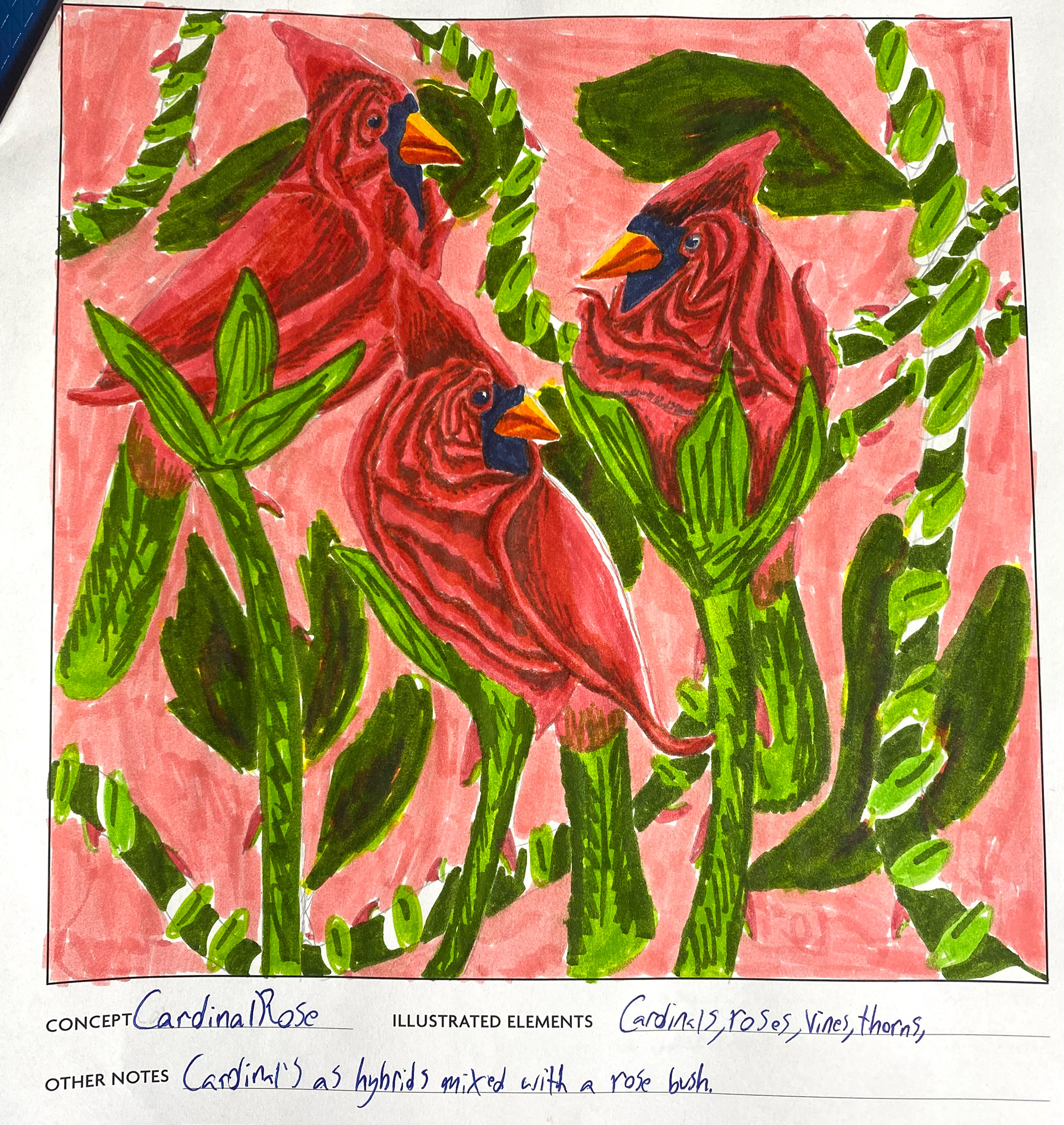
Beginning Process
To begin, I worked on developing a subject or theme for my pattern. I researched existing seamless patterns to get an idea of what might work. The patterns I discovered that followed the theme of this project had a long, twisting element. Such as vines, ribbons, ropes, and snakes. I ended up using rose vines as a reference for my pattern. But there was a catch. This assignment couldn't just be about flowers. Something about it had to be distinct; something had to stand out. Something to make it more interesting than your typical pattern. As a result, I combined red cardinals and red roses. Changing them into cardinal rose buds.
Work In Progress
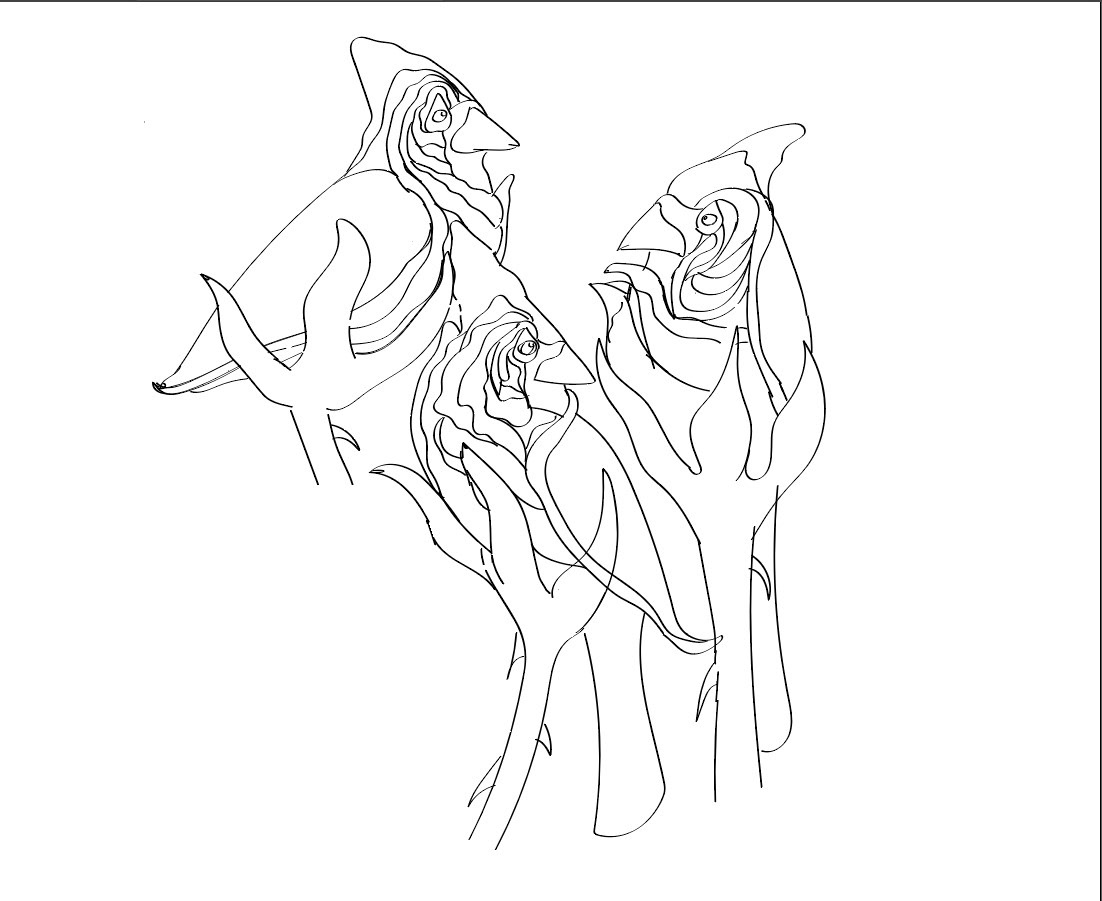
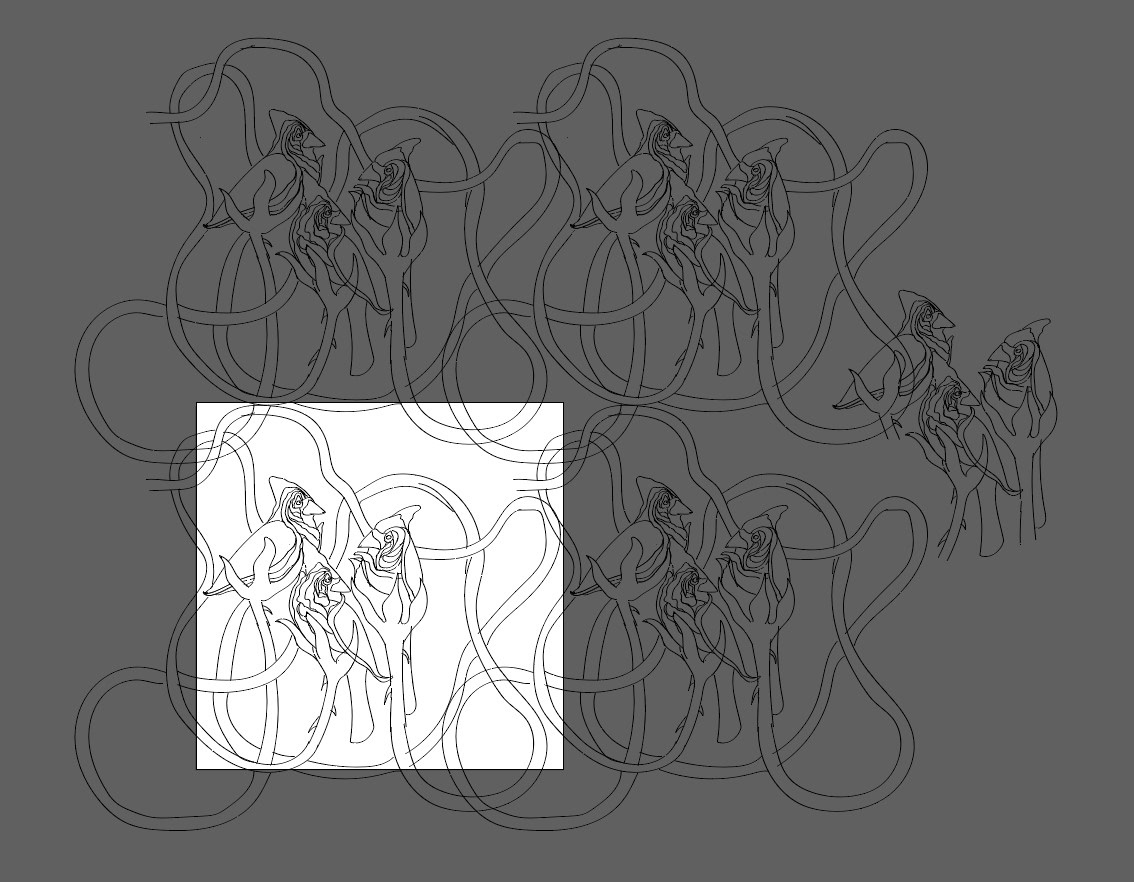
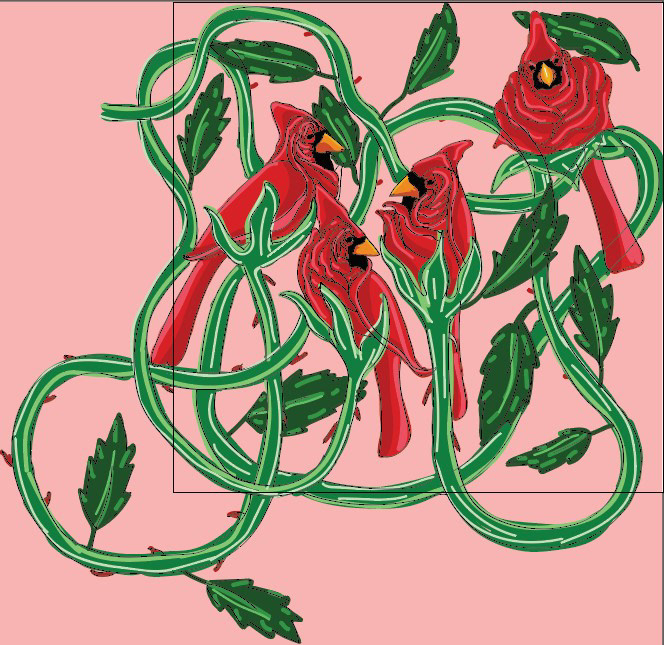
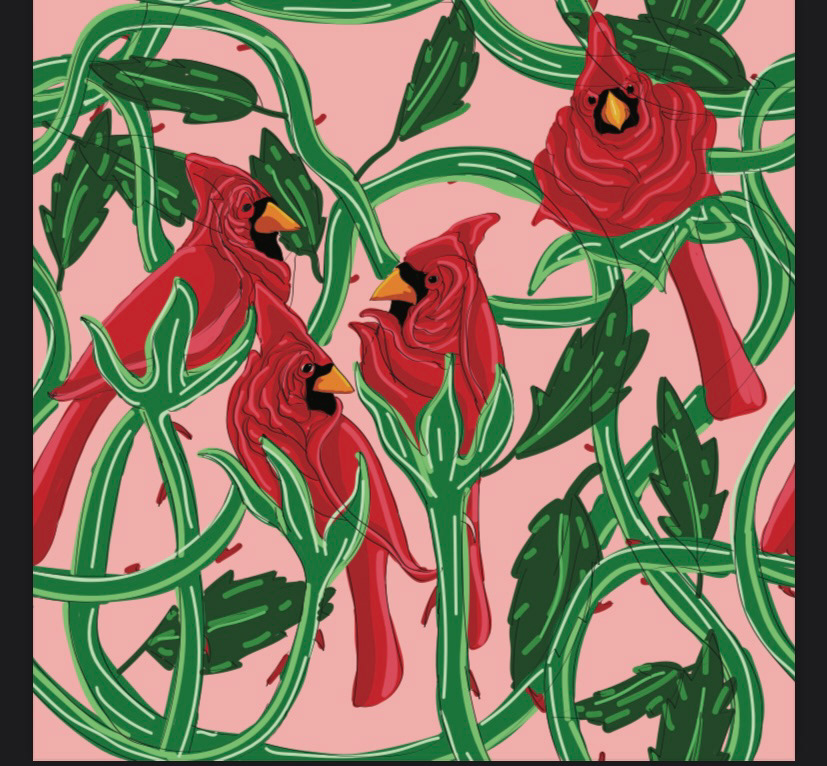
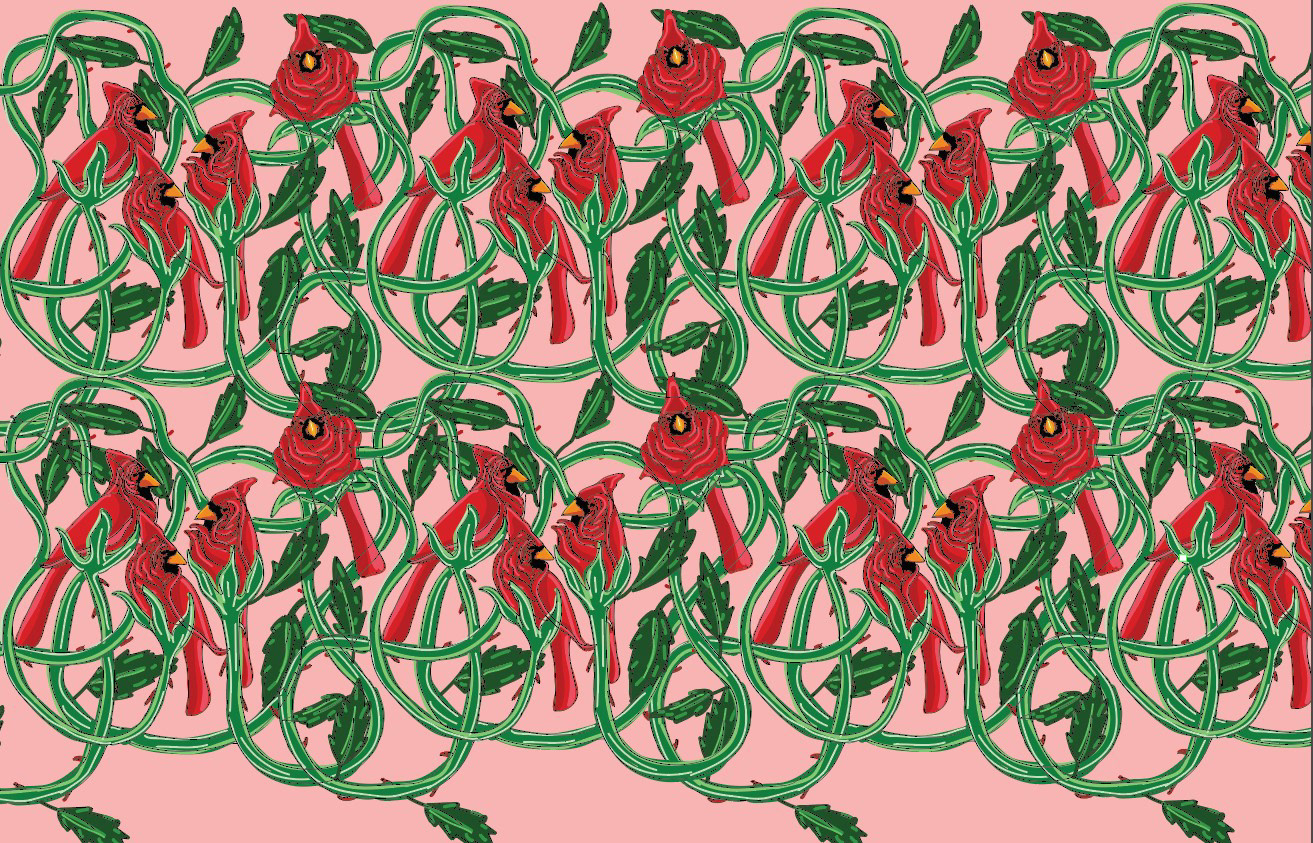
Now that I had my idea, I could begin. I first sketched the rose cardinals, working to show a variety of directions for them to face. Then I drew the vines until they began winding around the artboard. I added leaves and thorns as I went. I made sure to have parts of the vines and two rose cardinals hanging off the artwork. These pieces on the edge would then be copied and reflected onto the opposite edge of the tile. This way, when the pattern was repeated, the cutoff pieces would replicate in the correct spots to appear whole.
Continued Process To Final Design
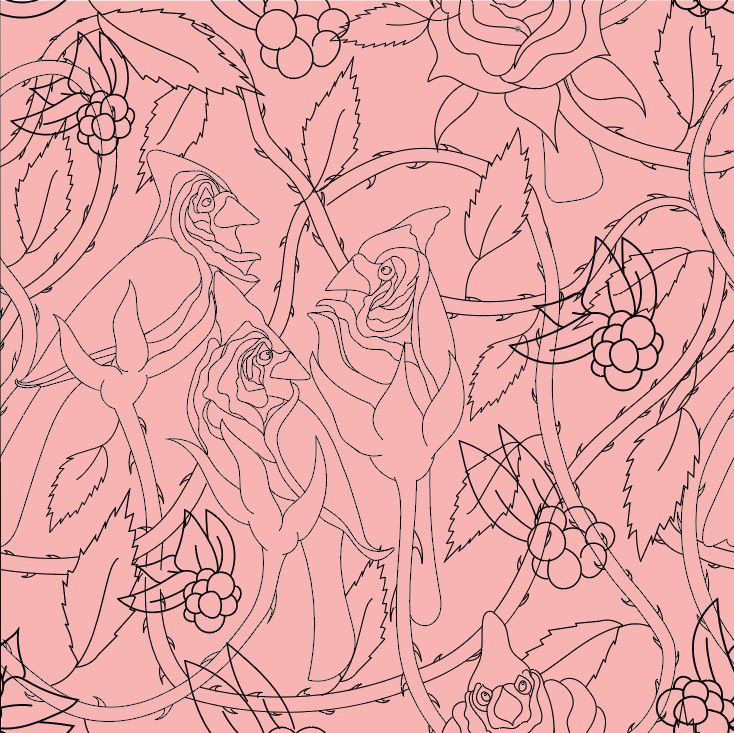
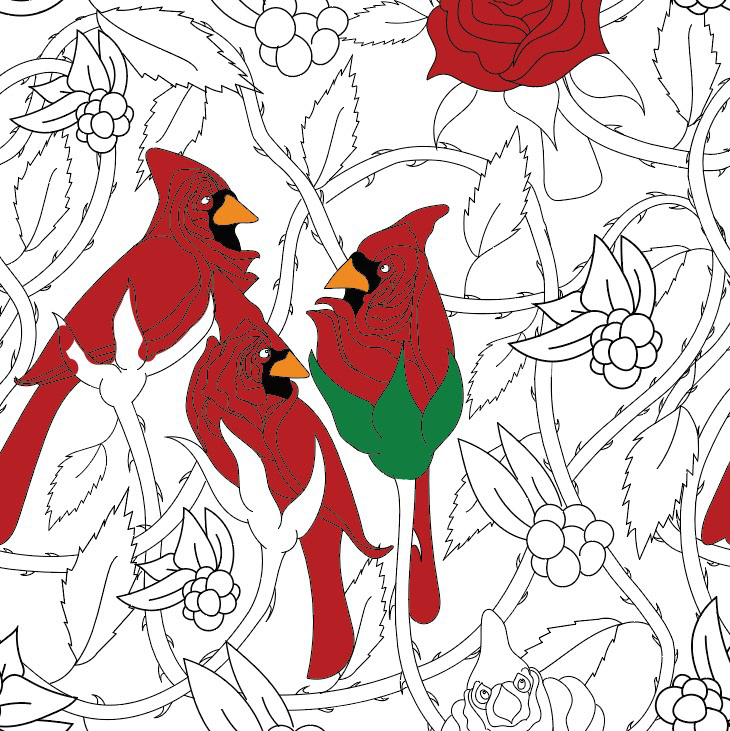
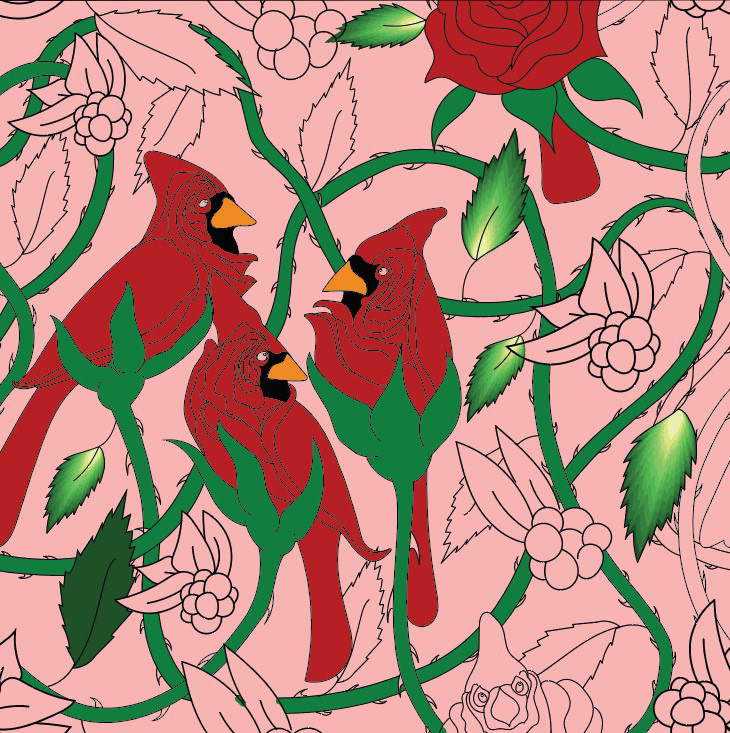
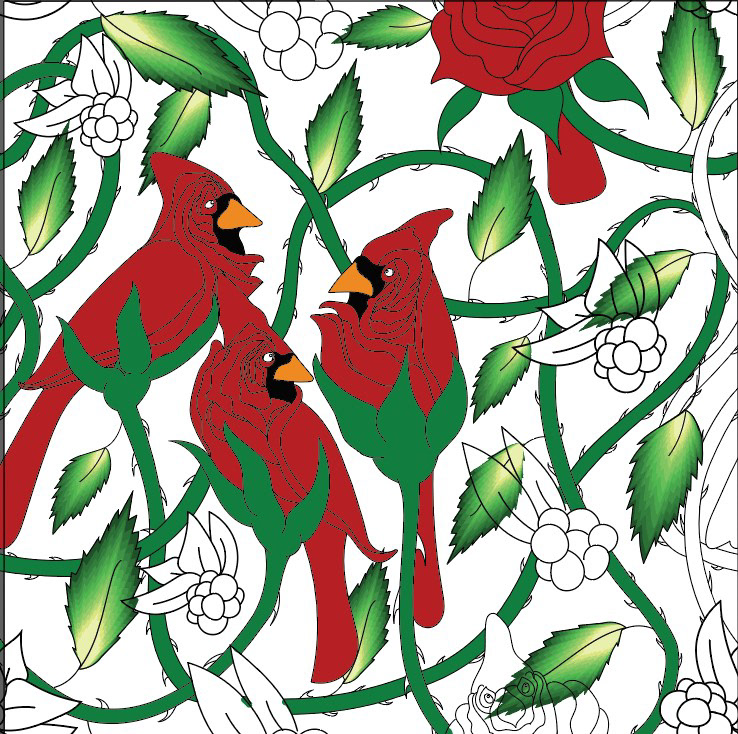
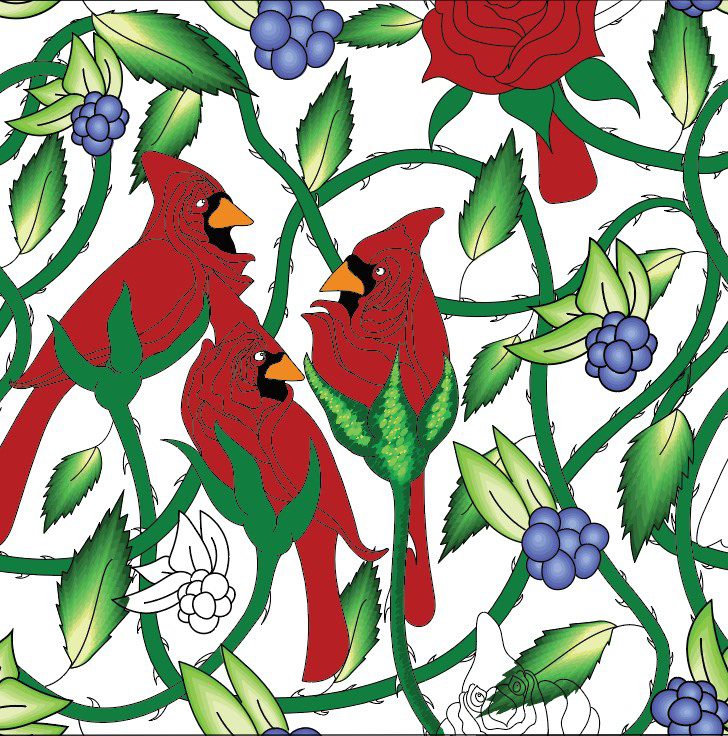
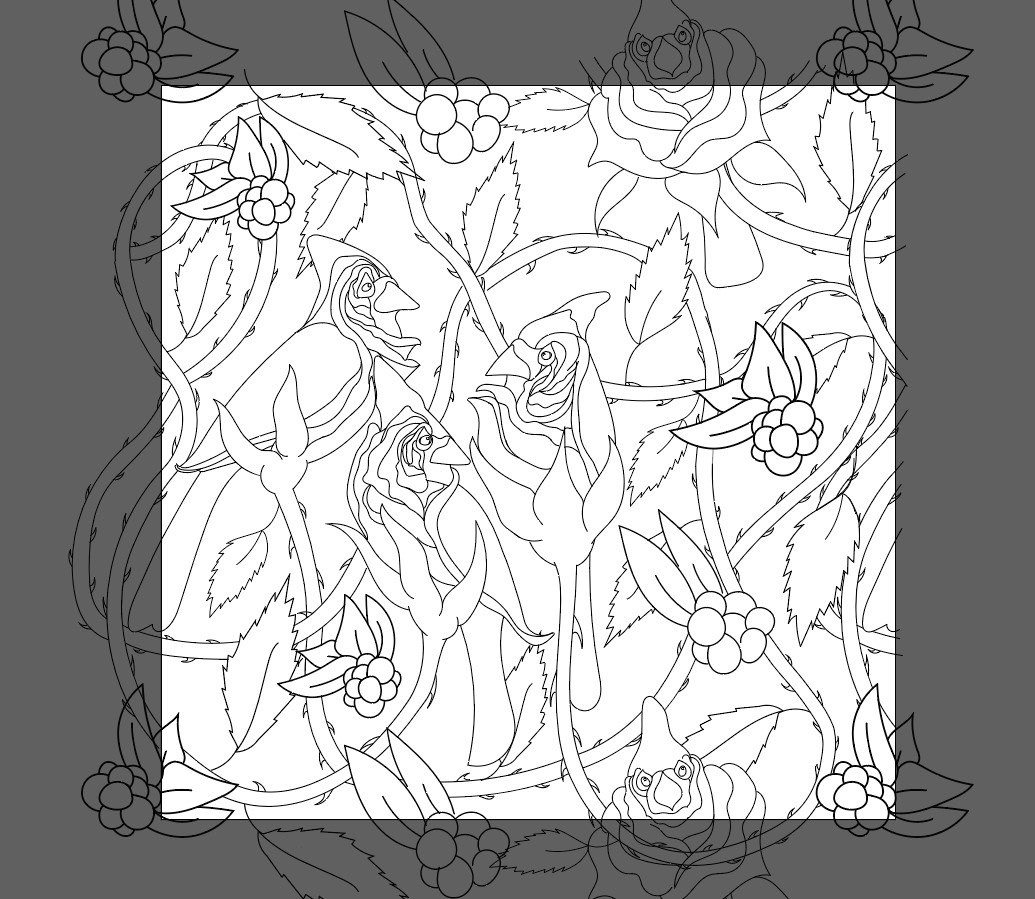
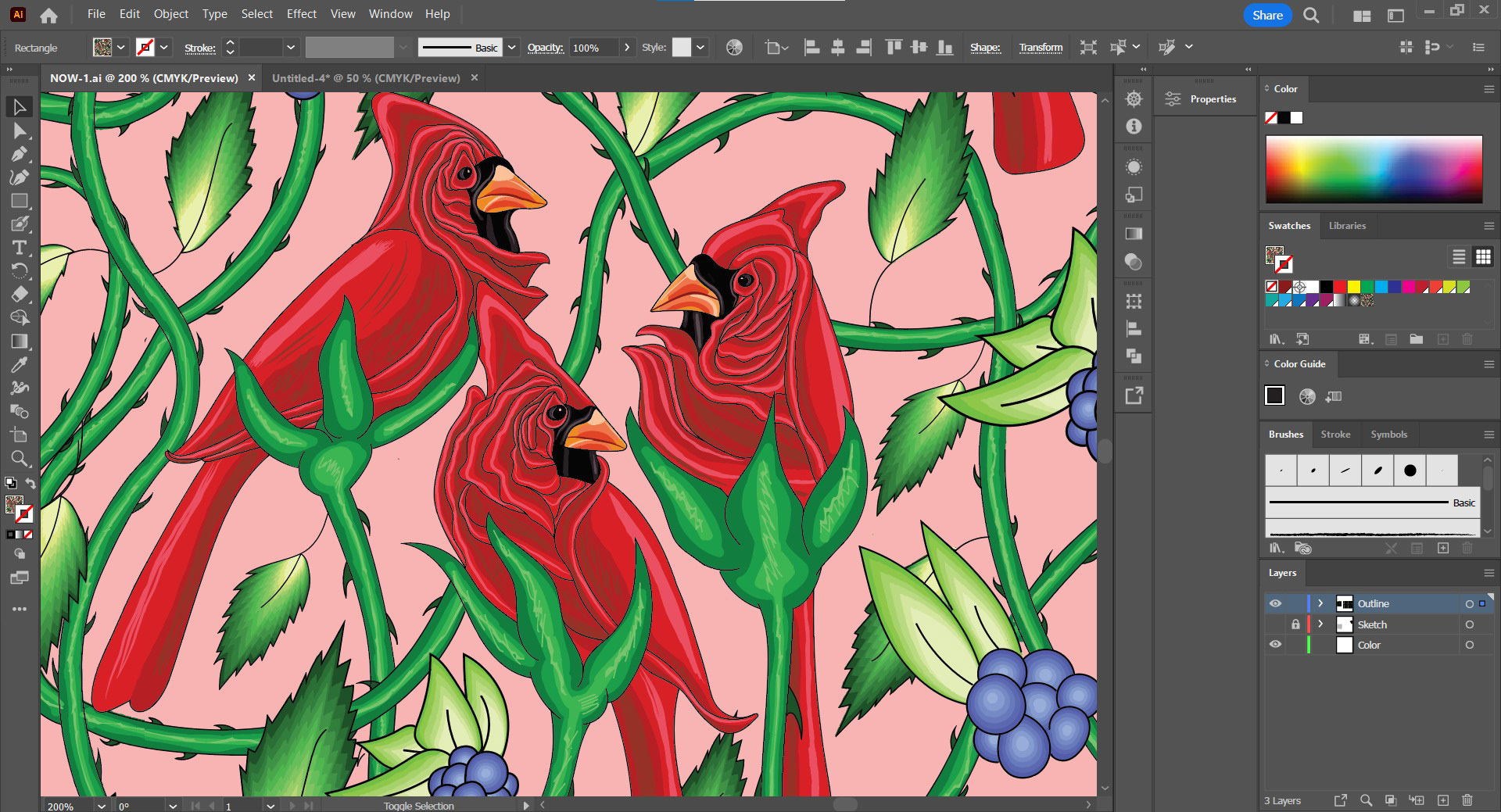
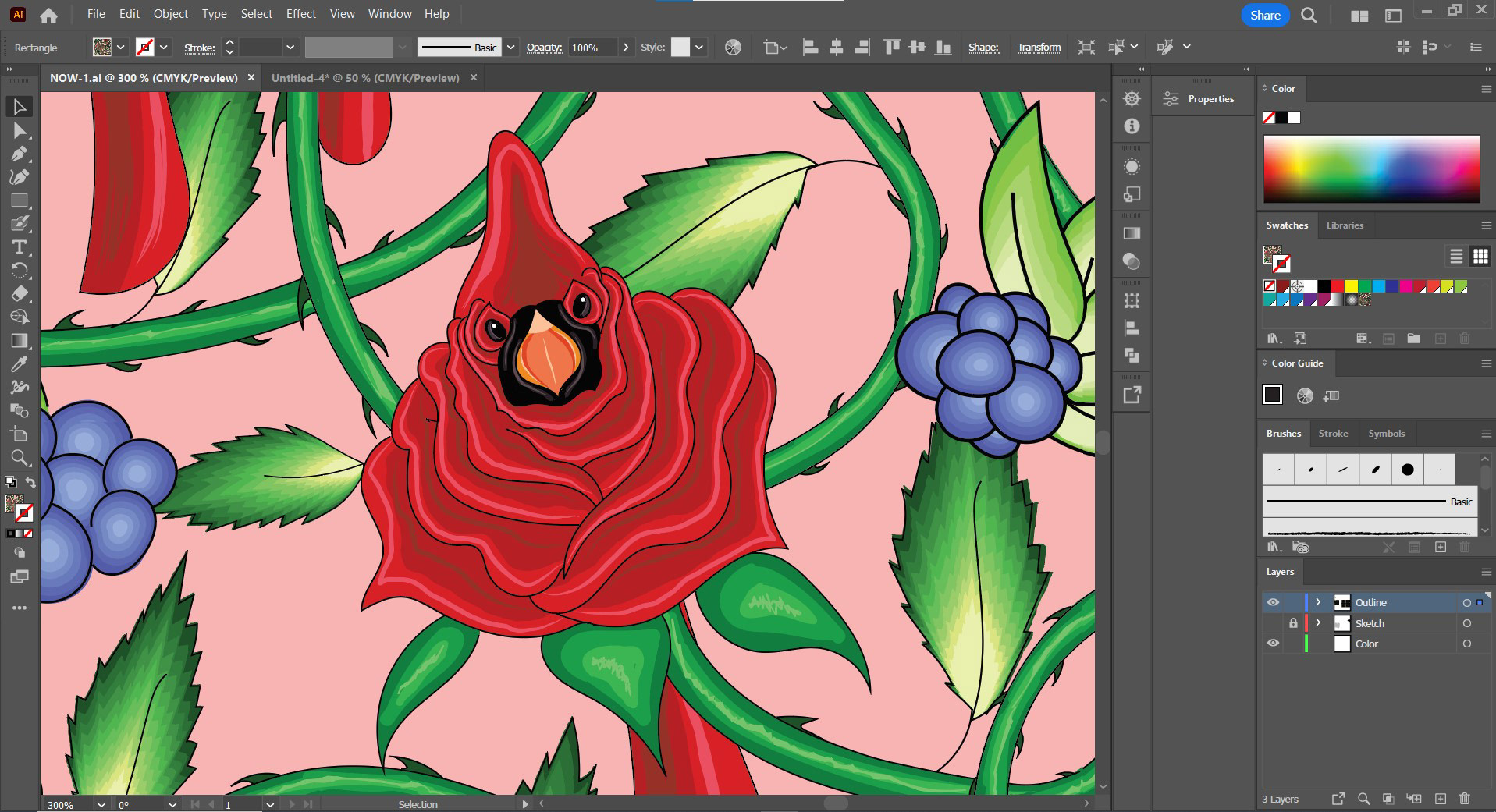
When I went to check the pattern to see if it looked seamless, I noticed gaps and empty spaces. Knowing I needed to fix this, I then went back and forth between editing and repeating the pattern to see if there were any noticeable gaps, and if there were, then I would have to go back in and adjust as needed. Though there was another issue which was the empty spaces. I realized that I needed more elements in my pattern, so I added blueberries, which filled most of the awkward empty spots. Though there was still something missing from my design. I realized that I needed one more rose cardinal to even the design up. Once I added it, the pattern became cohesive.
Final Tiled Pattern In Monochrome
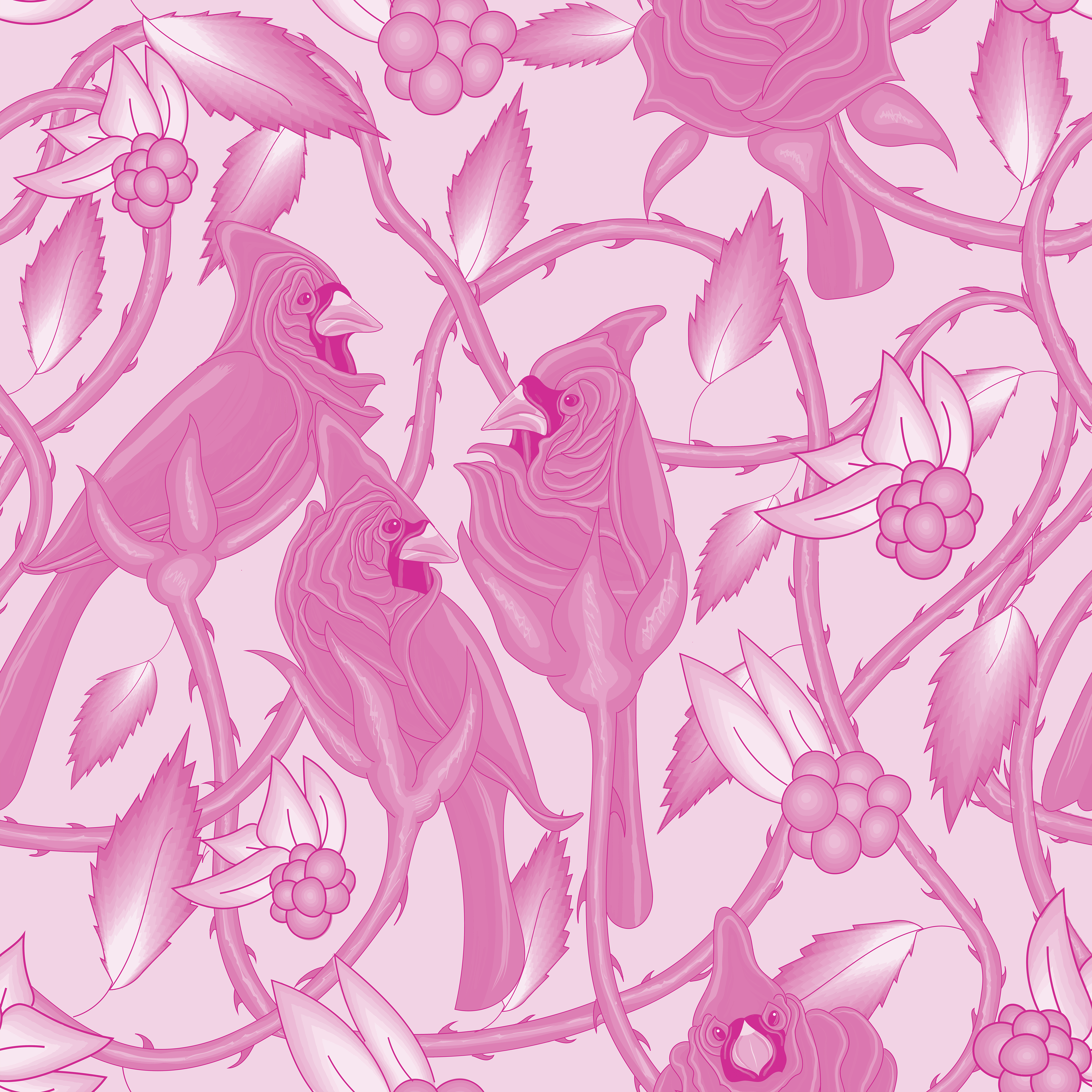
Monochrome Swatch
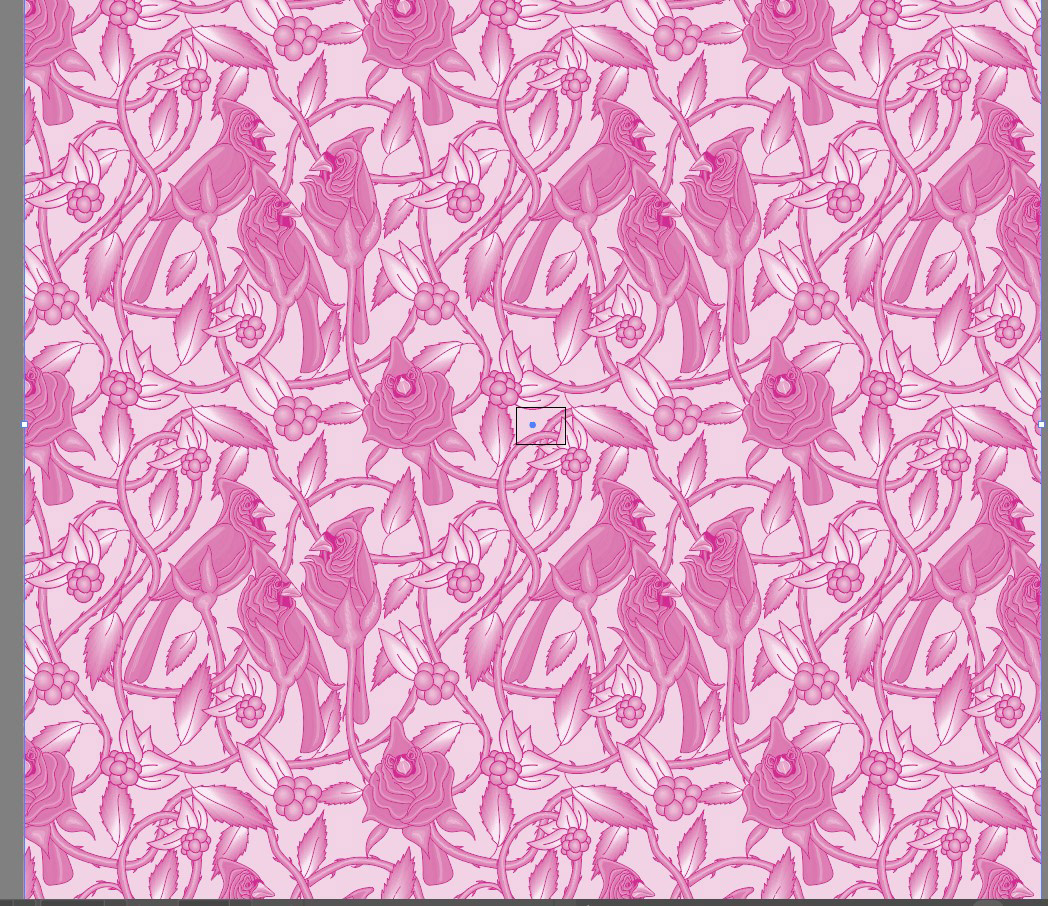
Final Tiled Pattern In Contrasting Colors
Contrasting Color Swatch
Final Thoughts
This project added to my skill set. Originally, I didn’t understand how seamless patterns worked. They always looked complicated to create, though now I do understand. I have also come to realize that a designer needs to work and try to create unique patterns so that their design stands out. From this assignment, I’ve come to understand how usable seamless patterns are. They can be used for so many things, from fabrics to bags, phone cases, clothes, blankets, etc. By knowing how to create seamless patterns, multiple product possibilities are opened up to me. Because once the pattern is created, it can be put on anything. It's a product that doesn’t go out of stock. Because of this assignment, I feel more confident in what I can offer as a designer and as an illustrator to my future clients.
